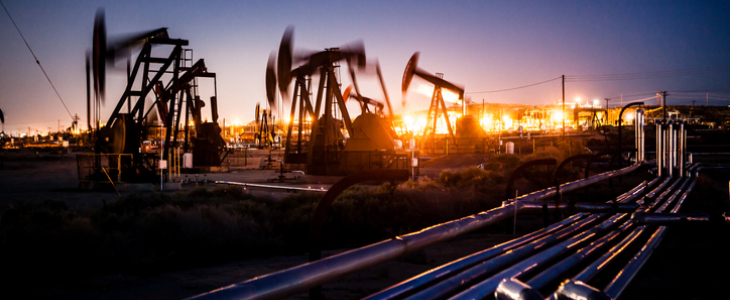The domestic oil industry is vital to the U.S. economy and our everyday lives. Though we depend on the oil industry so much, it does not change the fact that oilfield drilling comes with many inherent dangers, and, unfortunately, many of those dangers are exacerbated by negligent practices. One of the most prominent dangers of oilfield work is the risk of toxic exposure.
The hazardous chemicals, energy products, and waste on oilfields pose a significant risk to the health and well-being of oilfield workers. While some of the substances on oilfields are not, in and of themselves, dangerous, they become dangerous when they come into contact with other certain substances. The oilfield site owners and operators, as well as the contractors, must warn workers of the potential dangers surrounding toxins on the oilfield and be protected from them. If not, permanent damage could be sustained by workers as a result of toxic exposure and the health consequences can often be terminal.
If you or a loved one is an oilfield worker who has experienced oilfield toxic exposure, you know firsthand the damage it can do to a person’s body and the profound impact it can have on a person’s life. Oilfield workers deserve to be kept as safe as possible as they proceed with critical, yet dangerous, work. When parties responsible for their safety lapse in their duty of care, the consequences are often tragic. Our North Dakota oilfield accident attorneys work to hold those negligent parties responsible for the harm they have caused. In doing so, we help ensure that our injured clients receive full and fair monetary compensation for their damages.
Federal Regulations for Oilfield Toxic Chemicals
Due to the inherent risks of chemicals and hazardous materials in oilfield work, the Occupational Safety and Health Administration (OSHA) is tasked with tracking the use of such materials in oilfield locations. The National Institute for Occupational Safety and Health (NIOSH) also tracks such use. Both Department of Labor agencies, OSHA and NIOSH, are tasked with investigating oilfield hazardous materials as well as providing industry updates regarding toxins on oilfields. Furthermore, these agencies are tasked with making recommendations for how every oilfield site should safely address toxins.
Oil and gas companies, as well as site managers, must see to it that oilfield workers are aware of the OSHA and NIOSH toxin safety recommendations. Workers should be properly trained and given the proper equipment for working safely around hazardous materials on the oilfield.
The Deadliest Oilfield Toxins
There are several hazardous materials and toxic substances associated with the oilfield industry. Some substances are more lethal than others but all should be taken seriously. Some of the most dangerous and deadliest oilfield toxins are:
- Benzene
- Hydrogen sulfide
- Lead
- Nitrogen oxide
- Silica
- Sulfur dioxide
- Xylene
There are a variety of risks with these toxins. Some side effects work faster on the body and lead to serious complications more quickly. While others can slowly spread, but still prove lethal. In fact, it is not uncommon for months or years to pass before a worker realizes that certain health complications are arising due to significant exposure that previously took place on the oilfield.
The Dangers of Oilfield Toxic Exposure in North Dakota
Toxic exposure can come from breathing contaminated air to drinking contaminated water. The toxins may originate in drilling rigs, boilers, storage tanks, generators, and other places and machinery on an oilfield. Many workers are repeatedly exposed to oilfield toxins and they might not even realize they have suffered such exposure until adverse health consequences present themselves.
The damage from oilfield toxic exposure is often permanent and irreversible. This risk is often exacerbated by the fact that a proper diagnosis can take some time as the worker may not realize that they were exposed to toxins at all. Some of the most serious impacts of oilfield toxic exposure include:
- Death
- Terminal illness
- Cancer
- Leukemia
- Lung disorders
- Asthma
- Skin damage
- Chemical burns
- Liver damage
- Nerve damage
- Neurological damage
Oilfield toxic exposure symptoms may involve headaches as well as nausea and dizziness. If you have potentially been exposed to toxic chemicals on an oilfield, be on the lookout for these symptoms. Your best chance at a full recovery is to limit the damage that has already been done and get properly diagnosed and treated right away.
Contact Our North Dakota Oilfield Toxic Exposure Attorneys
Oilfield toxic exposure is a serious matter. Victims are often caught off guard when they are diagnosed with devastating health conditions and make the connection to past exposure. Oil and gas companies, as well as other potentially liable parties, must be held accountable for the damage they have caused the oilfield worker due to the toxic exposure.
The threat of exposure can often be minimized by effective training and the right safety tools. Without these things, workers are placed at needless risk and their health can greatly suffer as a result. This is why we work to hold the big companies accountable for the damage their negligence has caused. Let our team at Pringle & Herigstad, P.C. fight for you. Contact us today.
Pringle & Herigstad, P.C. is committed to supporting individuals in North Dakota, including Grand Forks and Minot, as well as the surrounding areas, who have been impacted by oilfield toxic exposure. Our dedicated team is here to provide legal assistance and guidance to those facing the complex challenges that arise from these incidents.
